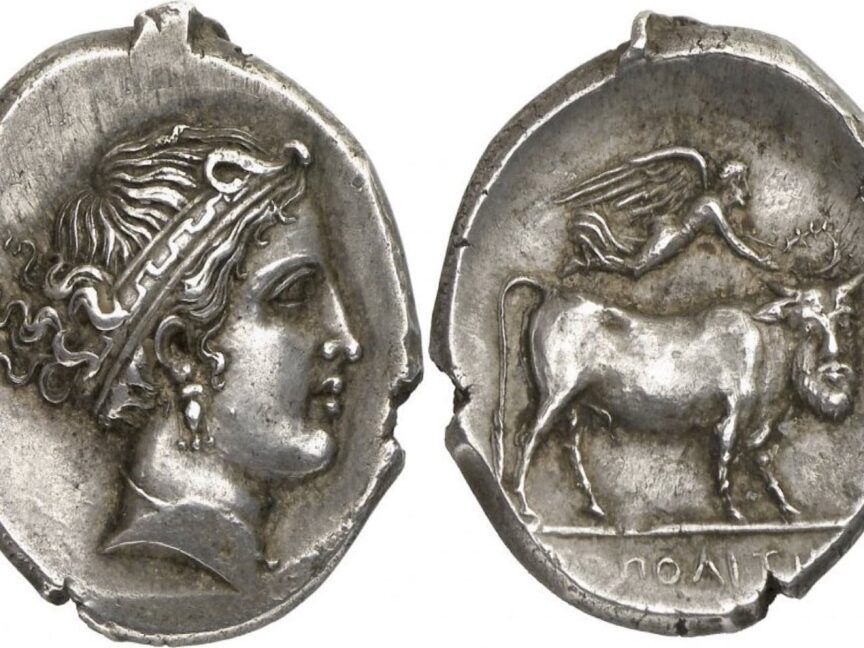Un’altra ricchezza partenopea: le monete di Neapolis, rappresentano il primo modello della monetazione romana.
Napoli non finirà mai di stupire in virtù della sua straordinaria storia e cultura: infatti l’antica Neapolis, ovvero città nuova, fondata dai greci rappresentò una sorta di trait d’union tra l’età greca e quella romana nel meridione italiano. Tra i tanti primati di questa splendida metropoli del mezzogiorno, troviamo le prime monete di Neapolis che fecero da modello alla monetizzazione dell’età romana. In verità la zecca di Neapolis, molto probabilmente, coniò i primi esemplari di monete già nel 470 a.C. Su di esse, da un lato era scolpita una testa di donna, forse la sirena Parthenope e dall’altro un toro con volto umano, presumibilmente una raffigurazione del fiume Acheloo, il padre di tutte le sirene. Si ha notizia che la città di Neapolis subì moltissimo l’influenza ateniese all’incirca verso la metà del V sec. a.C. Tale influenza portò a dei cambiamenti radicali che incisero anche sull’iconografia delle monete.
Clicca quì per continuare a leggere l’articolo.
Another Neapolitan wealth: the Neapolis coins represent the first model of the Roman coinage.
Naples will never cease to amaze by virtue of its extraordinary history and culture: in fact the ancient Neapolis, or new city, founded by the Greeks represented a sort of trait d’union between the Greek and Roman ages in southern Italy. Among the many firsts of this splendid metropolis of the south, we find the first coins of Neapolis that served as a model for the monetization of the Roman age. In truth the mint of Neapolis, very probably, coined the first specimens of coins already in 470 BC On them, on one side, a woman’s head was carved, perhaps the Parthenope siren and on the other a bull with a human face, presumably a representation of the Acheloo river, the father of all the sirens. There is news that the city of Neapolis suffered greatly Athenian influence around the middle of the fifth century. B.C. This influence led to radical changes that also affected the iconography of the coins.
Click here to continue reading the article.

